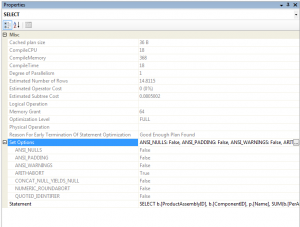Identifying inaccurate statistics
I wrote previously about statistics, what they’re needed for and I briefly mentioned what can happen when they’re inaccurate.
One question I’ve seen asked a few times is on how to identify stats that are inaccurate, what DMV to use. The bad new is that there is no DMV that identifies inaccurate statistics. The Stats_Date function can be used to see when the stats were last updated, but that doesn’t say if that was too long ago ort not. If a table is readonly, or is changed twice a year, statistics that are four months old are perfectly valid.
The rowmodcnt column in sysindexes can give an approximate count of the number of rows that have changed since the stats were last updated, although sysindexes is deprecated and will disappear in the next version of SQL and the rowmodcnt column is no longer completely accurate. The rowmodcnt however is just a count of changes. It gives no indication of whether that number is too high and causing a problem. In some cases 50% of the table may have changed before there’s a problem with queries. In other cases 5% is enough to cause problems.


